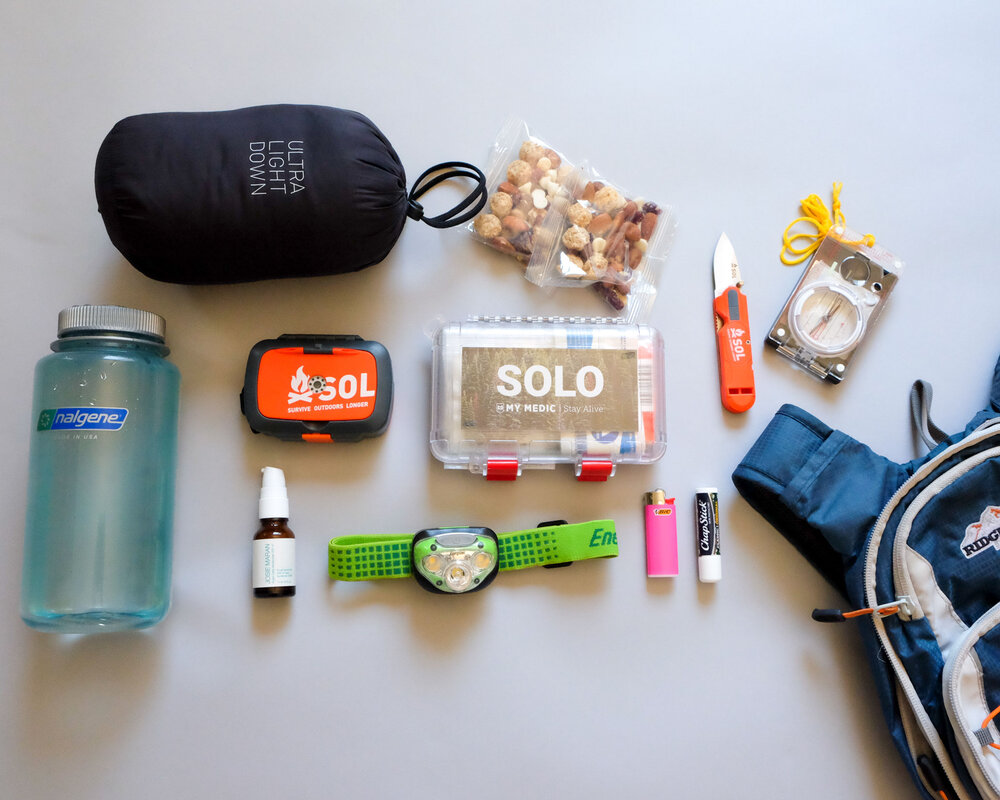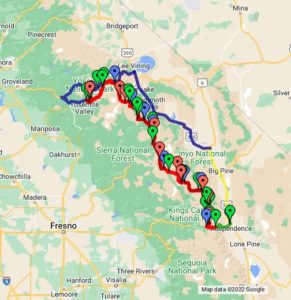
The mountains! The backcountry! They are glorious….aren’t they?
Perhaps you’ve heard of the fun, the inspiration, and even “the high” associated with hiking and now you’re planning on hitting the trails. Congratulations! Hiking truly does combine enjoyable physical activity, views that are often breathtaking, and that unique sense of inspiration that only nature can provide. It’s great you’re off to the hike! Just remember that like most new hobbies there are a few things of which beginners should take note.
10 THINGS BEGINNER HIKERS FORGET
- Check the Weather
- First-Aid Kit
- Water
- Wearing Synthetic Materials
- “Breaking in” Footwear
- Right Attitude
- Designated Trail Maps
- Traveling in a Group
- High-Quality Sleeping Bags and Outdoor Gear
- Staying in Good Physical Shape
WHO IS CONSIDERED A BEGINNER HIKER?
If you have been on less than five short and/or long hikes in your entire life, and are sincerely curious about what an experienced hiker would take on his/her hike then 1) you’re a beginning hiker, and 2) you’re a smart beginning hiker who realizes there may be some skill involved in the art of hiking.
So now that you consider yourself an amateur hiker, what things do most new hikers forget? Find out below!
1. CHECK THE WEATHER
Believe it or not, there are those who tramp out into the wilderness without checking the weather! Perhaps they have ultra faith in their Gore-Tex boots and Walmart ponchos but if a surprise hailstorm happens or a severe thunderstorm hits their radar then even Gore-Tex isn’t going to make the experience comfortable. It only takes a few minutes to check the weather online and if you’re not familiar with the area or the area is highly remote then you may consider consulting a professional guide. Also, surprise weather (outside of the forecast) can happen, so stay aware of the weather as you hike and learn how to do a little weather prediction yourself (clouds are very indicative of many types of weather and are pretty interesting to observe) couldn’t hurt at all and might even impress your friends!
2. FIRST-AID KIT
A first-aid kit is essential, no doubt, but you may wonder whether you should take the 100-item kit your mother gave you last Thanksgiving or the 3-item kit with gauze, a few band-aids, and some hand sanitizer. The truth is that you’ll probably want to find a comfortable balance between the larger and the smaller kit. Consider the nature of your hike. How long will it last? What is the topography of the area? Are you going to a large group? Chances are as you begin to visualize the hike you’ll get a good idea of the type of items and number of items that you may need. Also, ensure that you only bring first-aid items that you and/or your fellow hikers know how to use. There is no need to cart around a bloodborne pathogens kit or uline bandages if you have no idea how to utilize them!
 3. WATER
3. WATER
One of the cardinal rules of hiking is not to carry too much. Hiking, especially longer hikes with more difficult topography to navigate, can require a significant amount of endurance so there’s no reason to carry excess weight. Experienced hikers may have been trained to be comfortable in the wilderness for weeks with limited items and may even begin their journey without food or water as they have the skills they need to obtain it. For beginning hikers, however, it’s better to carry a bit more weight and take 1.5-2 times the amount of water you think you will need. Also, drinks with plenty of electrolytes such as coconut water and/or aloe water can be excellent for conditions that may result in dehydration. After all, good hydration always results in a more enjoyable hiking experience!
4. WEARING SYNTHETIC MATERIALS
You would think that when hiking it would be most recommendable to wear natural fabrics such as cotton. However, cotton T-shirts or blue jeans (jeans are made of cotton) will stay wet longer making it easier to get cold. Getting cold on a hike is not a comfortable experience and in more extreme conditions can lead to hypothermia and a lowered immune system. In short, cotton is not a great material to wear on hikes! Synthetic materials however will keep you dry longer as you start to work harder, sweat more, or face surprising inclement weather. TECHWICK materials are an option for all hikers whether beginners or experienced, but there are lots of synthetic materials available and any good sales rep at your neighborhood REI or outdoor gear establishment will be able to offer you helpful recommendations.
5. “BREAKING IN” FOOTWEAR BEFORE THE HIKE
It’s fairly common knowledge that footwear should be worn and “broken in” before heading out on a hike or even a lengthy walk. However, beginning hikers continue to overestimate their ability to fit into footwear they’ve never worn before. Blisters can be extremely painful and will put a stop to even the most inspiring of hikes and if the footwear becomes wet the discomfort can become excruciating. Remember that happy feet often equate to a happy hiking experience.
6. RIGHT ATTITUDE
Preparing for a hike mentally can make the hike more enjoyable. You don’t have to sit and meditate on peace and love for several hours before the hike but perhaps consider for a few moments the attitude you are bringing to the experience. Are you stressed out from a rigorous corporate job? Are you temporarily upset with someone in your hiking group? Consider what is going on for you and then visualize setting those emotions aside for the duration of the hike and giving yourself the gift of letting it all go, even if it’s just for a few hours.
Know what you want? Buy your gear here now!
 7. DESIGNATED TRAIL MAPS
7. DESIGNATED TRAIL MAPS
Just because you found the trailhead parking lot by using Google Maps or your GPS doesn’t mean you know where you are going! To really get a sense of where you’re headed try and locate a designated trail map. Trail maps will include topographical elements such as rivers, ridges, and peaks as well as hiking mileage and trailheads.
8. TRAVELING IN A GROUP
Though hiking alone may seem like the best route to getting the personal time that you need, consider getting that time in areas that are more familiar such as neighborhood parks or bike trails. Hiking with a group makes the adage “two heads are better than one” come alive. Surprising weather, accidents, chance encounters with wildlife, or even a simple stumble over a tree root can leave you suddenly alone without assistance and no way out. It’s simply best to hike accompanied. However, if you insist on hiking alone then make it an important habit to let at least one person (and better yet two people) know the exact trail that you will be on and also provide him/her with your designated trail map and your estimated time of return.
9. HIGH-QUALITY SLEEPING BAGS AND OUTDOOR GEAR
It’s okay to save money on water bottles at Walmart or your neighbor’s grocery store but when it comes to overnight outdoor trips, high-quality sleeping bags and outdoor gear won’t be found at your neighborhood Walmart. For sleeping bags and other outdoor gear, shop at REI, Amazon.com, or another designated outdoor gear shop.
10. STAYING IN GOOD PHYSICAL SHAPE
You don’t have to be an athlete to enjoy most hikes. However, hiking is far more enjoyable when the body is in good condition. Doing pilates or yoga once per week as well as walking and/or swimming 2-3 times per week can help keep the body supple and aligned and ready for your next outdoor excursion!

 3. WATER
3. WATER 7. DESIGNATED TRAIL MAPS
7. DESIGNATED TRAIL MAPS